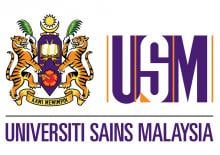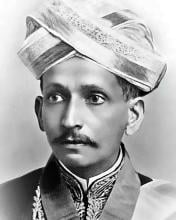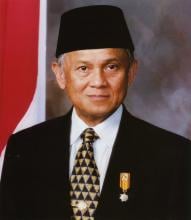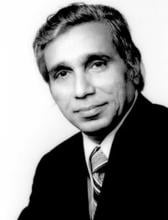Technology
News

05 Oct 2007
Squashed carbon balls show promising electronic properties

05 Oct 2007
Physicists have long known that, when cooled to very low temperatures, electrons can be placed on the surface of liquefied helium. Now, researchers from RIKEN and Keio University have discovered they can effectively excite these electrons using microwave radiation.

04 Oct 2007
New development to contribute to the application of quantum codes that will be essential for absolutely secure information management.

03 Oct 2007
The first three students in the Keio-EC Double Degree Program successfully graduated from the Graduate School of Science and Technology.

03 Oct 2007
In this week's Nature, Yasunobu Uchiyama and colleagues from the Institute of Space and Astronautical Science, Japan report the discovery of a brightening and decay in the X-ray emitting shells around a supernova.

03 Oct 2007
This project from the Asian Institute of Technology, will enable policy makers in ASEAN countries to understand their country's poverty distribution and map them using GIS technology. They can then determine links between poverty and land use which will lead to the development of long term plans to alleviate poverty in the region.
02 Oct 2007
Following the signing of space collaboration agreement between China and Russia earlier this year, scientists at The Hong Kong Polytechnic University (PolyU) got a new chance to design their state-of-the-art space tools for a mission to Mars onboard a Russian spacecraft.

02 Oct 2007
Malaysia will be sending its first astronauts to the International Space Station on 10 October, 2007 where they will be conducting 10 different experiments. One of the experiments is designed by Universiti Putra Malaysia (UPM) to understand the structure of protein under microgravity.

02 Oct 2007
Scientists from The Asian Institute of Technology analysed remote sensing images around the Mesopotamia Marsh and identified how much of the marsh has disappeared.

02 Oct 2007
Ultrahigh-energy cosmic particles are extremely rare—only 11 have been observed in 13 years. No one knows where they come from, or how they could have that much energy left over after the long journey through intergalactic and interstellar space. RIKEN is planning to observe them on board the International Space Station.

30 Sep 2007
UPM researchers have developed BiOX, a new type of bismuth oxide nanoparticle, which is cheap and ecologically friendly to produce. Bismuth oxide is important in everyday life its non-toxic properties. It can be used as a substitute for lead, eradicating peptic ulcer bacteria, in cosmetics and in solid oxide fuel cell

28 Sep 2007
One jellyfish can throw a swimmer into a panic, but relentless swarms can disrupt entire economies. The isolation of a promising new protein by Japanese researchers could help reverse the economic damage being done by exploding jellyfish populations

28 Sep 2007
Scientists have confirmed that a powerful particle accelerator has recreated the intense conditions that existed just microseconds after the beginning of the universe.

23 Sep 2007
Streaming JMCS is the next step in providing rich multimedia experience for 3G mobile users. A 3G mobile user can download and install a Java based application that will enable him to dynamically “stream” video contents to his mobile device using the high speed 3G network.

21 Sep 2007
Collective motion of molecules in a crystal could lead to new electronic devices
17 Sep 2007
The world’s first database storing 3D head and face measurements of ethnic Chinese has come into use, after 18 months of dedicated efforts by pioneering researchers of The Hong Kong Polytechnic University. As a result of this important ergonomic data, industrial designers will now be able to design products that fit Chinese people properly.

16 Sep 2007
Infectious bursal disease (IBD) also known as Gumboro disease is the second most important poultry disease after Newcastle disease. In this study, we reported for the first time the use of Sybr Green I based real-time PCR to differentiate different strains of IBD virus.

15 Sep 2007
Thailand is the world’s largest exporter of shrimps, yet its share of the world largest shrimp market - the European Union - is proportionally far lower. This project aims to understanding the problems and devise solutions and training to boost the incomes of many poor farmers and improve access to the European Union market.

13 Sep 2007
The Ecole des Mines is the oldest school in Paris, it can claim a French president and Nobel Prize winner amongst its many graduates; it is ranked in the top three universities for science and technology in France.

12 Sep 2007
"Biotechnology has the potential to produce more food to meet the increasing demand in developing countries, but it must be nutritionally and environmentally safe." Representatives and scientists from 16 countries and three international organizations met in Syria to develop an integrated regional framework on biotechnology and biosafety.

11 Sep 2007
Producing food for the increasing human population generally results in increased use of pesticides, which is finding its way into drinking water supplies. This research is proven to filter up to 85 % of dimethoate and more than 95% of atrazine.

11 Sep 2007
This e-primer introduces policy makers and development practitioners to the application of different information and communications technology (ICT) for disaster management, with case studies from the Asia-Pacific region.

09 Sep 2007
In rice-producing Malaysia, rice bran is a rice-milling by-product that is normally considered wasteful. However, researchers at University Putra Malaysia have developed antioxidant neutraceutical formulations from rice bran oil and palm oil.

09 Sep 2007
Two researchers from RIKEN’s SPring-8 Center in Harima have demonstrated the conversion of x-rays into longer wavelengths that preserves some of their useful properties, such as high spatial resolution.

09 Sep 2007
A three-component catalytic system enables the formation of carbon–fluorine bonds at precise positions in organic molecules

09 Sep 2007
Researchers find superconductivity in a material typically used as cement

05 Sep 2007
As the economical and technological growth of China increases exponentially, the country has a great opportunity to become an environmentally clean society.

05 Sep 2007
Information from distant seismic events is revealing a complex picture of the tectonic plate boundary in southeast China

04 Sep 2007
This APDIP e-Note intends to give a brief introduction to government interoperability frameworks (GIFs), explain how they are classified and provide details of their common features. It also discusses the importance of open standards in GIFs and why governments should consider open standards seriously when designing or evaluating their GIFs.

04 Sep 2007
Asian Institute of Technology aims to focus its work on six areas : information and communications technology for development; food and aquatic systems (bio-resources); urban and rural sustainability (climate change); the Asian model of management; water; and robotic and sensor networks for an intelligent environment.
Researchers
Sorry, no researchers coming up for this topic.
- « first
- ‹ previous
- 1
- 2
- 3
- 4
Giants in history
Sir Mokshagundam Srinivasa Shastry Vishveshwarayya (15 September 1860 – 14 April 1962) is widely regarded as India’s most outstanding engineer. In a career that spanned almost his entire life, Vishveshwarayya played a pivotal role in several engineering projects, including designing the Krishnarajasagara dam that is still the source of irrigation and drinking water for parts of Karnataka today.
Physicist Narinder Singh Kapany (31 October 1926 – 4 December 2020) pioneered the use of optical fibres to transmit images, and founded several optical technology companies. Born in Punjab, India, he worked at a local optical instruments factory before moving to London for PhD studies at Imperial College. There, he devised a flexible fibrescope to convey images along bundles of glass fibres.
Bacharuddin Jusuf Habibie (25 June 1936 – 11 September 2019) was an Indonesian engineer who was President of Indonesia from 1998 to 1999.
A Japanese surgeon, Tetsuzo Akutsu (20 August 1922 – 9 August 2007) built the first artificial heart capable of keeping an animal alive.
Fazlur Rahman Khan (3 April 1929 – 27 March 1982) was a Bangladeshi-American structural engineer and architect who invented the tube principle, which formed the basis for modern skyscraper design.
Lin Lanying (7 February 1918 – 4 March 2003) was a Chinese material engineer remembered for her contributions to the field of semiconductor and aerospace materials. Lanying was born into a family who did not believe in educating girls and she was not allowed to go to school.
Gregorio Y. Zara (8 March 1902 – 15 October 1978) was a Filipino engineer and physicist best remembered for inventing the first two-way video telephone. Zara’s video telephone invention enabled the caller and recipient to see each other while conversing, laying the foundation for video-conferencing








